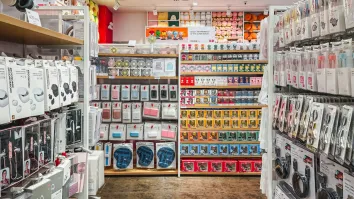
How retailers can successfully engage the growing Gen Z market
Globally, Gen Zs are expected to have a total consumer spending of $12t by 2030.
Retailers must pay close attention to Gen Z shopping behaviours today as this demographic is on track to becoming the largest customer segment by the end of the decade.
According to KPMG Malaysia Head of Consumer & Retail Ngu Heng Sing, Gen Zs make up 25% of the global population; and come 2030, they are expected to have a total consumer spending of $12t.
Hybrid shopping preferences
A study conducted with GSY, surveying 7,000 consumers across 14 countries, revealed that 27% prefer physical stores, 24% favour online shopping, and a significant 49% prefer both.
Malaysia reflects this statistic as nearly half or 49% of shoppers prefer the hybrid approach of combining online and in-store shopping.
“This highlights the importance for retailers today to have not only the physical experience but also the online experience to better serve all segments of the market itself,” Heng Sing said at the Retail Asia Forum held in Kuala Lumpur recently.
Key priorities for e-commerce platforms are price, choice, proportions, and delivery. Notably, Gen Z shoppers place a higher priority on choice over price.
Shopee and Lazada dominate the e-commerce landscape in the country, capturing approximately 60% of the market. Facebook Marketplace and Instagram follow with around 6%, whilst other platforms, including Taobao and TikTok, make up 18.9% of the market share.
Top online purchases in the country include clothing, fashion accessories, beauty and personal care products, and electronics, with average spending ranging from $30b to $279b for electronics.
E-commerce platform dominance
Comparatively, online shopping preferences in the Asia-Pacific region are higher, with Indonesia leading at 59%, followed by China at 40%, and Vietnam and Hong Kong at 36%.
Malaysia ranks highly in e-commerce platform popularity but shows greater price sensitivity compared to other Asia-Pacific countries, driven by competitive voucher promotions.
Regional e-commerce platform preferences also vary, with Lazada, Shopee, and Facebook Marketplace prominent across Asia, whilst Instagram is notably popular in Malaysia. In non-Southeast Asian countries, platforms like Tokopedia, Amazon, and eBay are prevalent.
The top online purchase categories in Malaysia and other Southeast Asian countries align with those observed globally, including fashion and clothing accessories, beauty products, and electronics.
However, in countries like China, Taiwan, Japan, and Korea, groceries and household items top the online shopping list.
Technological advancements
“We can see and hear that many retailers today are actually investing heavily in technology, AI solutions, and streamlined supply chains just to meet the demands of an increasingly digital-savvy customer base,” Heng Sing said at the Malaysia forum.
She cited as examples Sephora’s virtual artist, IKEA’s innovative in-store experiences, and Amazon’s walk-through shopping technology.
However, Heng Sing noted that consumers are concerned about data privacy, ethical use of AI, and the lack of human interaction.
Digital payments are also gaining prominence, with e-wallets becoming more popular in Southeast Asia, whilst credit cards remain dominant in countries like Australia, New Zealand, and Japan.
In Malaysia, retailers already offer multiple payment options, with e-wallets gaining popularity. By 2027, e-wallets are expected to be the key payment method for physical purchases.
Loyalty programmes are also evolving, rewarding customers for various interactions beyond purchases to boost retention and attract new customers.



















 Advertise
Advertise








